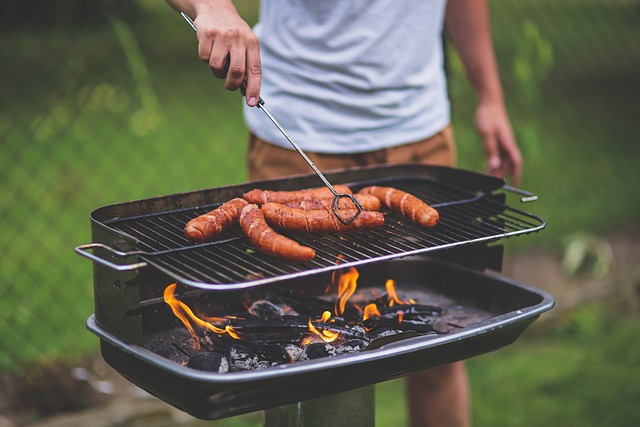A Beginner’s Guide to BBQ Grilling
The aroma of a barbecue grill on a summer evening often recalls memories. It uniquely connects families and friends. If you have not tried grilling before, it might seem challenging. So many grill choices, methods, and recipes exist, and deciding where to start might be confusing.
Grilling does not have to be difficult. With some basic steps, you can excel at it and delight others with delicious, smoky flavors. Here are simple tips for beginning your BBQ journey.
Choosing the Right BBQ Grill
Before you start the grill, select one that fits your needs. Choosing the right BBQ grills depends on your lifestyle. Each type has benefits, so consider your available space, cooking schedule, and desired flavors. Grills are of various types: charcoal, gas, and electric. Each type has special benefits and cooking styles. Imagine your grill as a clean canvas; each type adds flavor and style.
Charcoal grills have a smoky taste because charcoal adds flavor. They are best for people who like traditional barbecue and do not mind spending time on the coals. Gas grills focus on ease, letting you control heat with an easy turn of a knob. They’re great for quick, easy weeknight grilling with delicious results without waiting too long. If space is tight or you need something straightforward, electric grills let you cook wherever there’s an outlet.
Essential Tools for BBQ Success
Possessing the right tools truly improves your grilling adventure. Just as baking a cake requires measuring cups and an oven, grilling also requires certain basic tools for great outcomes.
Long tongs are vital for turning and shifting food safely while keeping a distance from heat. A spatula works well for managing delicate foods like fish fillets or burgers, letting you flip them softly.
A meat thermometer is essential, especially for beginners. It shows when the meat reaches the correct point without guessing. It also avoids the trouble of cooking steak too much or chicken too little by revealing when your dish is prepared.
A quick scrub before and after use maintains the grill grates, reducing the chance of food sticking. These straightforward tools make grilling more seamless and enjoyable.
Getting the Heat Right
Controlling heat is important for good grilling. Use charcoal or a gas grill to see how direct and indirect heat works, like stove cooking. Not all meals do well with high heat; some need low and slow warmth.
Direct heat suits quick-cooking foods like burgers, sausages, and vegetables. Food rests over the flames or coals, browning the outside and keeping juices inside. Foods needing more time, like chicken or thick meats, prefer indirect heat. Place them away from the flames to let them cook slowly and evenly, similar to roasting.
Using both direct and indirect heat provides flexibility. You can sear meats over direct heat for a crispy outside, then switch them to indirect heat to finish cooking through. This method helps achieve juicy, well-cooked dishes every time.
Prepping and Seasoning Your Food
Proper food preparation is just as essential as grilling it. Marinate or season your meats and vegetables a few hours before cooking them for the best flavor. Simple marinades made with olive oil, vinegar, garlic, and herbs enhance the taste of meat and help keep it juicy during grilling.
If marinades aren’t your thing, dry rubs quickly add flavor. A combination of salt, pepper, paprika, and garlic powder works well as a base for a rub that goes well with nearly any protein.
If you are grilling BBQ ribs, make sure you prep and season properly. Letting the seasoning sit before grilling is crucial so the flavors can soak in. Some olive oil, salt, and pepper make a big difference for vegetables. Good seasoning highlights natural flavors, making each bite taste like summer.
Portable Grills for On-the-Go BBQ
Get a small portable grill to enjoy cooking outside almost anywhere—at the park, beach, or tailgate gathering. These grills allow BBQ flavors to travel with you. They arrive in different styles, whether a tiny charcoal grill or a light gas model that’s simple to move.
Portable grills are great for people craving BBQ without a big yard. They serve well on camping journeys or picnics, giving that lovely smoky taste wherever you go. They are easy to use and fast to arrange, making them great for anyone who likes BBQ without needing a big setup.
Knowing When to Flip and Rest Your Meat
Grilling is about heat and flavor, and timing plays a key role. Knowing when to flip and let your meat rest can enhance your grilling game. A general rule is not to flip meat frequently. Cooking it on one side provides a nice sear while keeping the juices inside. You’ll know it’s time to flip when the meat releases easily from the grill.
After cooking meats on gas grills, it is important to let them rest for a few minutes. This resting period spreads the juices evenly, making the meat tender and flavorful. Though often missed, this step makes a noticeable improvement in texture and taste.

